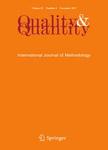版权所有:内蒙古大学图书馆 技术提供:维普资讯• 智图
内蒙古自治区呼和浩特市赛罕区大学西街235号 邮编: 010021

作者机构:Univ Vienna Dept Govt Rooseveltpl 3-1 A-1090 Vienna Austria
出 版 物:《QUALITY & QUANTITY》 (质与量)
年 卷 期:2017年第51卷第6期
页 面:2623-2646页
核心收录:
学科分类:0303[法学-社会学] 03[法学] 0714[理学-统计学(可授理学、经济学学位)]
基 金:Austrian National Election Study (AUTNES) National Research Network (NFN) - Austrian Science Fund (FWF) [S10903-G08, S10903-G11] University of Vienna's Department of Social Sciences University of Vienna
主 题:Sentiment analysis Crowdcoding Political communication Negative campaigning Media negativity
摘 要:Sentiment is important in studies of news values, public opinion, negative campaigning or political polarization and an explosive expansion of digital textual data and fast progress in automated text analysis provide vast opportunities for innovative social science research. Unfortunately, tools currently available for automated sentiment analysis are mostly restricted to English texts and require considerable contextual adaption to produce valid results. We present a procedure for collecting fine-grained sentiment scores through crowdcoding to build a negative sentiment dictionary in a language and for a domain of choice. The dictionary enables the analysis of large text corpora that resource-intensive hand-coding struggles to cope with. We calculate the tonality of sentences from dictionary words and we validate these estimates with results from manual coding. The results show that the crowdbased dictionary provides efficient and valid measurement of sentiment. Empirical examples illustrate its use by analyzing the tonality of party statements and media reports.